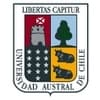Relación entre la temperatura timpánica y las condiciones climáticas invernales en novillos en engorda en la Región del Biobío
Un total de 20 novillos recibieron un dispositivo electrónico para colectar temperaturas timpánicas (TT). Simultáneamente, también se colectaron las variables climáticas incluyendo: temperatura del aire, velocidad del viento, radiación solar, humedad relativa y precipitación, mediante una estación meteorológica situada en el mismo predio. Estos datos se utilizaron para estimar el índice integral del clima (CCI). El análisis estadístico de los datos incluyó análisis descriptivos, ANDEVA y regresiones simples y múltiples (nivel de significancia del 5%), siendo TT la variable respuesta. La TT promedio de novillos fue de 37,59 ± 0,02 y 37,16 ± 0,03 °C durante los años 2010 y 2011, respectivamente. Las condiciones climáticas fueron normales y no representaron un desafío para los animales desde el punto de vista térmico. Lo anterior se vio reflejado en los valores medios del CCI de 7,30 ±0,11 y 6,27 ±0,12 °C, durante los años 2010 y 2011, respectivamente. Los análisis de regresión lineal mostraron que la mayoría de las variables observadas fueron significativas, pero ninguna de ellas explica en buena forma la variabilidad observada (r2 < 0,1). Los análisis de regresión múltiple mejoraron los valores de los coeficientes de determinación (R2 ), pero aún estuvieron por debajo de 0.50. Finalmente, se concluye que para los períodos de estudio, la TT no sufrió grandes cambios como consecuencia de las condiciones ambientales evaluadas. Del mismo modo, los novillos no mostraron signos de estrés ambiental.
Palabras clave: ganado bovino de engorda, temperatura corporal, confort térmico, invierno.






Arias, R.A., Mader, T.L., Escobar, P.C., 2008. Climatic factors affecting cattle performance in dairy and beef farms. Archivos de Medicina Veterinaria 40(1), 7-22.
Arias, R.A., Mader, T.L., 2009. Effects on environmental factors on body temperature of feedlot cattle, Nebraska Beef Report (Vol. MP92, pp. 102-104.). Lincoln Nebraska: University of Nebraska-Lincoln.
Arias, R.A., Mader, T.L., Parkhurst, A.M., 2011. Effects of diet type and metabolizable energy intake on tympanic temperature of steers fed during summer and winter seasons. Journal of Animal Science 89(5), 1574-1580.
Benzinger, T.H., 1959. On physical heat regulation and the sense of temperature in man. Proceedings of the National Academy of Sciences of the United States of America 45(4), 645-659.
Benzinger, T.H., 1964. The Thermal Homeostasis of Man. Symposium Society for Experimental Biology 18, 49-61. Bianca, W., 1968. Thermoregulation, in: Hafez E.S.E. (Ed.). Adaptation of Domestic Animals Philadelphia: Lea & Febiger Publisher, pp. 97-118.
Bianca, W., 1976. The Significance of Meteorology in Animal Production. International Journal of Biometeorology 20(2), 139-156.
Bluett, S.J., Fisher, A.D., Waugh C.D., 2000. Heat challenge of dairy cows in the Waikato: a comparison of spring and summer. Proceedings of the New Zealand Society of Animal Production 60, 226-229.
Bond, T.E., Garrett, W.N., Givens, R.L., Morrison, S.R., 1970. Comparative effects of mud, wind and rain in beef cattle performance. International Journal of Farming. Building Research 5, 3-9.
Brown-Brandl, T.M., Eigenberg, R.A., Hahn, G.L., Nienaber, J.A., Mader, T.L., Spiers, D.E., Parkhurst, A.M., 2005. Analyses of thermoregulatory responses of feeder cattle exposed to simulated heat waves. International Journal of Biometeorology 49(5), 285-296.
Brown-Brandl, T.M., Eigenberg, R.A., Nienaber, J.A., 2006. Heat stress risk factors of feedlot heifers. Livestock Science 105, 57-68.
Christison G.I., Milligan, J.D., 1974. A seven year study of winter performance of feedlot steers in western Canada. Proceeding of the International Livestock Environment Symposium, University of Nebraska-Lincoln, USA, April, 17-19 1974, pp. 296-300.
Collin, A., van Milgen, J., Dubois, S., Noblet, J., 2001. Effect of high temperature on feeding behaviour and heat production in group-housed young pigs. British Journal of Nutrition 86(01), 63-70.
Cossins, A.R., Bowler, K., 1987. Temperature Biology of Animals. Chapman and Hall, London. da Silva, R.G., Minomo, F.R., 1995. Circadian and seasonal variation of the body temperature of sheep in a tropical environment. International Journal of Biometeorology 39, 69-73.
Easton, C., Fudge, B.W., Pitsiladis, Y.P., 2007. Rectal, telemetry pill and tympanic membrane thermometry during exercise heat stress. Journal of Thermal Biology 32(2), 78-86.
Eigenberg, R.A., Brown-Brandl, T.M., Nienaber, J.A., 2008. Sensors for dynamic physiological measurements. Computer and Electronics in Agriculture 62, 41-47.
FAO. 1995. Manual para el personal auxiliar de sanidad animal primaria. http://www.fao.org/docrep/t0690s/ t0690s00.htm (acceso 06.24.2016).
Finch, V.A., 1986. Body temperature in beef cattle: Its control and relevance to production in the tropics. Journal of Animal Science 62(2), 531-542.
Gaughan, J.B., Mader, T.L., Holt, S.M., Josey, M.J., Rowan, K.J., 1999. Heat tolerance of Boran and Tuli crossbred steers. Journal of Animal Science 77(9), 2398-2405.
Guidry, A.J., McDowell, R.E., 1966. Tympanic membrane temperature for indicating rapid changes in body temperature. Journal of Dairy Science 49(1), 74-77.
Guyton, A.C., Hall, J.E., 2006. Textbook of Medical Physiology. Elsevier-Saunders Publishers, Philadelphia, PA.
Hahn, G.L., Nienaber, J.A., Eigenber, R.A., 1993. Environmental influences on the dynamic of thermoregulation and feeding behavior in Cattle and Swine. Proceedings of the IV International Livestock Environment Symposium, University of Warwick, Coventry, England, July, 6-9 1993, pp. 1106-1116.
Hahn, G.L., Mader, T.L., Eigenberg, R.A., 2003. Perspective on development of thermal indices for animal studies and management, in: Lacetera, N., Bernabucci, U., Khalifa, H.H., Ronchi, B., Nardone, A. (Eds.), Interactions between climate and animal production (EAAP Technical Series No. 7), Wageningen Academic Publishers, The Netherlands, pp. 31-44.
Kamerman, P.R., Di Zio, L.C., Fuller, A., 2001. Miniature data loggers for remote measurement of body temperature in medium-sized rodents. Journal of thermal biology 26(3), 159-163.
Khalifa, H.H., 2003. Bioclimatology and adaptation of farm animals in a changing climate, in: Lacetera, N., Bernabucci, U., Khalifa, H.H., Ronchi, B., Nardone, A. (Eds.), Interactions between climate and animal (EAAP Technical Series No. 7), Wageningen Academic Publishers, The Netherlands, pp 15-29.
Lowe, T.E., Cook, C.J., Ingram, J.R., Harris, P.J., 2001. Impact of climate on thermal rhythm in pastoral sheep. Physiology & Behavior 74, 659-664. Mader, T.L., 2003. Environmental stress in confined beef cattle. Journal of Animal Science 81(14_suppl_2), E110-119.
Mader, T.L., Johnson, L., 2010. Tympanic temperature profile of confined beef cattle Nebraska Beef Report (Vol. MP93, pp. 101-103.). Lincoln Nebraska: University of Nebraska-Lincoln.
Mader, T.L., Johnson, L.J., Gaughan. J.B., 2010. A comprehensive index for assessing environmental stress in animals. Journal of Animal Science 88(6), 2153-2165.
Mader, T.L., 2011. Mud Effects on Feedlot Cattle Nebraska Beef Report (Vol. MP94, pp. 82-83): University of Nebraska-Lincoln.
MAFF., 2000. Climate change and agriculture in the United Kingdom. Ministry of Agriculture, Fisheries and Food (MAAF). London, UK.
NRC., 1981. Effect of Environment on Nutrient Requirements of Domestic Animals. National Academy Press, Washington DC.
Sacristán, G., 1987. Fisiología veterinaria. Editorial Interamericana/Mc Graw Hill. Madrid.
Sprott, L.R., Selk, G.E., Adams, D.C., 2001. REVIEW: Factors affecting decisions on when to Calve Beef Females. Professional Animal Scientist 17(4), 238-246.
West, J.W., 2003. Effects of heat-stress on production in dairy cattle. Journal of Dairy Science 86, 2131-2144.










